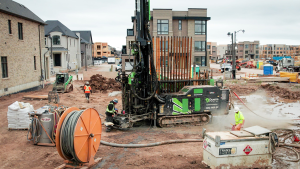The new version of the Canadian Construction Document Committee’s CCDC2 has been released, replacing the version that has been in use since 1994.
Canadian Construction Document Committee
The new version of CCDC2 has been released, replacing the version that has been in use since 1994.
While many of the changes are aimed at making the contract easier to understand, there have been some changes that should be noted.
The following are some of the significant changes:
Payment – Under Article A-5 interest rates on unpaid amounts will now be two per cent above the prime rate for the first 60 days and four per cent above the prime rate after the first 60 days. The prime rate shall be the rate of interest quoted by a chartered lending institution named in the contract documents.
Receipt of and Addresses for Notices in Writing – Article A-6 describes the delivery and receipt process that must be used whenever the defined term “Notice in Writing” is specified in the contract documents. Methods of delivery of a Notice in Writing have been expanded to address other forms of communication, including electronic.
Progress Payment – GC 5.3 increases the payment period specified in paragraph 5.3.1 from 15 calendar days (10 calendar days for the consultant to certify and five calendar days for the owner to pay) to 20 calendar days after the contractor’s application for payment.
Concealed or Unknown Conditions – GC 6.4 has been revised to expressly exclude weather related risk.
Delays Due to Weather – GC 6.5.3 now provides that delays due to abnormal weather conditions will result in an extension of the contract time. However, there is no corresponding entitlement to payment for costs associated with such delays.
Claims for a Change in Contract Price – GC 6.6 is an entirely new section which outlines the procedures for making claims for either an increase or decrease in the contract price, including notice provisions.
Utility Location – GC 9.1.2 now requires the contractor to determine the locations of all underground utilities and structures before commencing any work, subject to certain limitations set out in the GC.
Toxic and Hazardous Substances / Mould – GC 9 sets out protocols for dealing with these substances, including:
• The process in the event the owner and the contractor do not agree on the existence or significance of toxic and hazardous substances, and
• The obligations of the owner and contractor in the event they agree or the expert referred to in paragraph 9.2.6 determines that the substances were pre-existing or brought onto site by the contractor.
Artifacts and Fossils – GC 9.3 is a new condition that addresses the process and the rights and obligations of the parties in the event the contractor discovers artifacts, fossils or things that are of scientific or historic interest.
Insurance – GC 11.1 has been extensively reworked, with different limits and insurance conditions. Important changes include:
• General Liability Insurance: Minimum liability insurance coverage and maximum deductible have been increased to $5 million and $5,000 respectively.
• “Broad Form” Property Insurance: Minimum property insurance coverage and maximum deductible have been increased to “1.1 times contract price” and $5,000 respectively.
• Insurance provisions that are anticipated to change periodically have been moved to the new CCDC 41 – CCDC Insurance requirements, i.e. insurance limits, deductibles and standard exclusions.
• If a new edition of CCDC 41 is published after the time of bid closing, the parties may wish to increase or decrease the insurance coverage accordingly. In the case of a reduction, the time to agree on the reduced coverage must be before the contractor’s policy is renewed. In the case of an increase, the owner may request the increased coverage from the contractor by way of a Change Order (i.e. there may be cost implications).
Contract Security – GC 11.2 has been revised to recognize other types of contract security, i.e., certified cheque, letter of credit, etc. in addition to surety bonds.
Indemnification – GC 12.1 has been extensively redrafted. The obligation to indemnify is now mutual and, with respect to claims by third parties for bodily injury or property damage, unlimited in amount. The consultant will no longer be indemnified by the contractor. All indemnification related provisions have been consolidated under this GC.
Waiver of Claims – GC 12.3 has been substantially revised. Important changes include:
• Waiver provisions shall be “mutual” between the owner and the contractor.
• Primary Waiver of Claims shall be tied to expiry of lien period (five days prior) instead of “final certificate for payment”.
• Waiver of Claims arising out of warranty provisions shall be tied to 395 days after Substantial Performance of the Work.
• The Notice in Writing of claim described under this General Condition has specific conditions.
Warranties – GC 12.3 has been revised to address extended warranties beyond the normal one year warranty period.
The new CCDC2 can be purchased through regional construction associations.










Recent Comments
comments for this post are closed